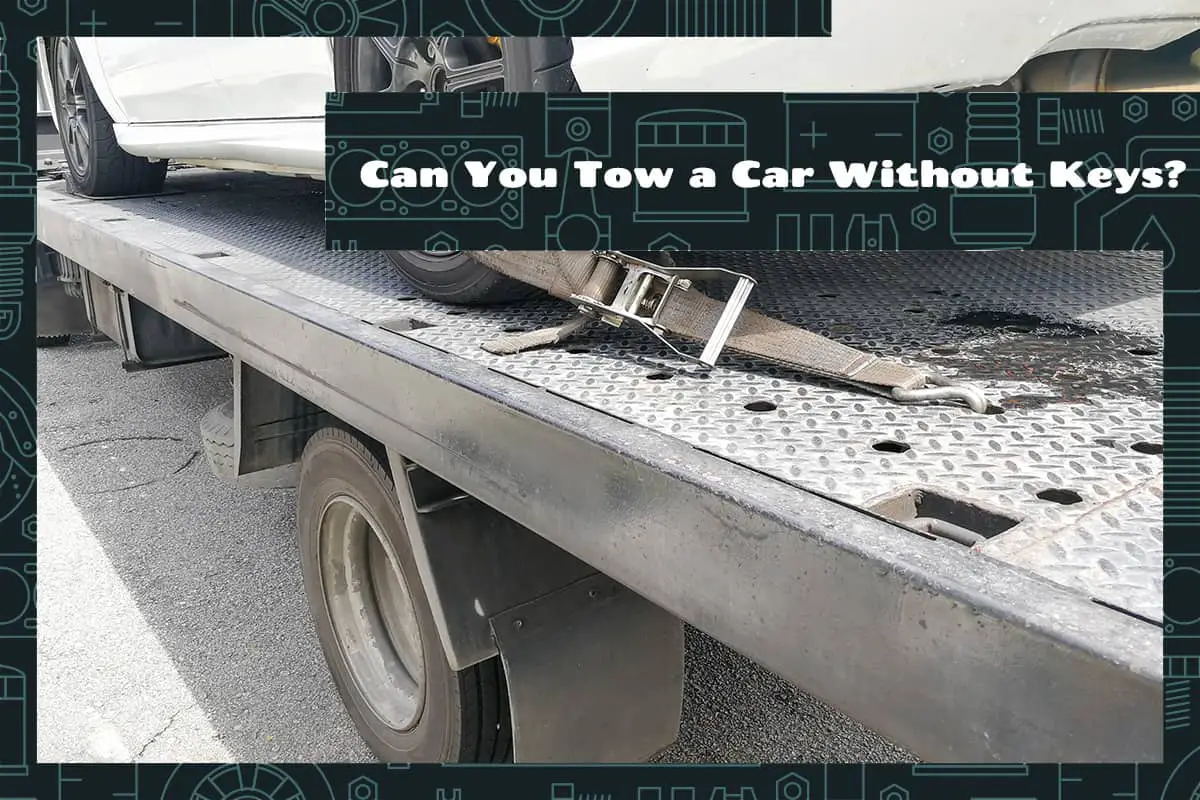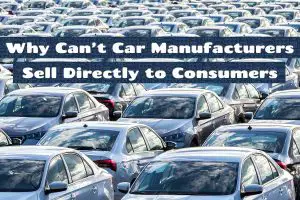Cars often need to be towed for various reasons, whether it’s a breakdown, a parking violation, or after an accident. The process might seem straightforward when you have the keys, but what happens when you don’t?
Cars are towed without keys all the time. To tow a car without keys, ensure the transmission is in. If this is not possible, you can use appropriate equipment like tow dollies or flatbed trucks.
This article dives deeper into the complexities of towing cars without their keys, highlighting key considerations, potential challenges, and best practices.
Basic Principles of Towing
Towing mechanisms are devices or sets of devices used to connect the tow vehicle with the one being towed. The right equipment ensures that the tow is safe, efficient, and minimizes potential damage. Some commonly used towing mechanisms include:
- Tow Bars: These are non-motorized, triangular-shaped devices connecting the towing vehicle to the one being towed. They’re best suited for short distances or when using auxiliary brakes.
- Tow Dollies: These are two-wheeled trailers that hold the front or rear wheels of the car being towed. The car’s weight is partly supported by the dolly and partly by the car’s remaining wheels on the ground.
- Flatbed Trailers: As the name suggests, these trailers have a flat surface or bed. The entire car is loaded onto this bed, making it an ideal choice for long distances and ensuring no wear and tear on the car’s wheels or transmission.
Towing Without Keys
Towing a vehicle is a task that’s complex in itself, but when you add the absence of keys to the equation, the process gets even more intricate. Without keys, not only do you have to consider the vehicle’s weight, size, and type, but also the potential safety risks and damages associated with towing a locked car.
Why Might One Need to Tow Without Keys?
- Accidents: Post a collision, if the car owner is incapacitated, the keys might not be readily available for towing.
- Lost or Stolen Keys: A common scenario, especially in large parking lots or during travels, where one might misplace their car keys.
- Abandoned Vehicles: Cars left unattended for prolonged periods might need towing, and in most cases, their keys are not available.
- Parking Violations: Illegally parked cars are often towed away by city authorities, typically without the vehicle’s keys.
Common Scenarios and Challenges
- Steering Lock: In many vehicles, when keys are removed, the steering wheel locks. This can make towing tricky as the wheels won’t turn, making it harder to steer the towed car.
- Engaging Neutral: For a smooth tow, the vehicle should ideally be in neutral. Without keys, shifting to neutral in some cars, especially those with automatic transmissions, can be a challenge.
- Brake Engagement: Some modern cars have electronic parking brakes that need the key for disengagement. Towing without disengaging can cause damage.
Techniques for Towing Without Keys
- Slim Jim: A thin strip of metal that can be slid down between the car’s window and door panel to unlock the door. This method, though effective for older cars, isn’t recommended for newer models with sophisticated electronic systems.
- Air Wedge and Rod: An inflatable wedge is used to create a gap between the car’s door and frame. Once the gap is created, a rod is used to press the unlock button inside the car.
- Bypassing Steering Lock: For cars with steering locks, a screwdriver or similar tool can be used to turn the ignition cylinder. However, this method isn’t recommended for regular use as it can damage the ignition system.
Best Practices for Towing Without Keys
If you’re going to tow your car without keys, there are a few things you need to do.
Assessing the Situation
Ensure the car is in a safe location, away from heavy traffic or obstacles that might obstruct the towing process. A quick visual inspection can help identify any existing damage or issues that might complicate the towing.
If towing someone else’s car or a vehicle due to a violation, always have the required permissions and documents in place.
Preparing the Vehicle
If possible, unlock the steering wheel to allow for easier maneuvering during towing. This might involve bypassing the steering lock in some older models. The car should be in neutral to prevent transmission damage. For cars where shifting to neutral without keys is challenging, professional assistance might be necessary.
Choosing the Right Towing Method
- Flatbed Towing: The safest option, especially for modern cars with sophisticated systems. The entire car is placed on a flat surface, ensuring all wheels are off the ground.
- Two-Wheel Dolly Towing: Suitable for front-wheel or rear-wheel drive cars, this method lifts two wheels off the ground, while the other two remain in contact with the road.
- Four-Wheel Towing: All wheels remain on the ground, and tow bars are typically used. Shift the car’s transmission to neutral to prevent damage.
When in Doubt, Hire Professionals
For those uncertain about the towing process or lacking the required equipment, hiring professional towing services is a wise decision. At the very least, their tools and expertise will reduce the risk of damage caused to the car being towed.
FAQs
1. Can you tow a car with another car?
Yes, it’s possible to tow a car using another car, but it’s not always recommended. For short distances or emergencies, you can use tow straps or chains to connect the two vehicles. Before you do this, make sure the towing car has the proper towing capacities.
2. Can a locked car be towed without causing damage?
Yes, a locked car can be towed without damage if done correctly. There are a few precautions to take into account:
If the steering wheel is locked, it might restrict the movement of the front wheels. In such cases, it’s preferable to use a flatbed tow truck, which keeps all four wheels off the ground, preventing any drag or scraping.
Cars with automatic transmissions should ideally be in neutral when towed. If you can’t shift to neutral due to the car being locked, using a flatbed is again the best option.
Ensure the car’s handbrake or parking brake isn’t engaged, especially if you’re not using a flatbed.
3. How do modern keyless entry systems impact the towing process?
Modern keyless entry systems, prevalent in many new cars, add an extra layer of complexity to the towing process.
- Electronic Parking Brakes: Many cars with keyless systems have electronic parking brakes that automatically engage when the car is parked. To tow such vehicles safely, this brake needs to be disengaged, which usually requires the key fob. If the brake isn’t disengaged, it can lead to brake system damage.
- Transmission Lock: Some keyless vehicles lock their transmission when turned off, making it imperative to use a flatbed tow truck.
- Security Alarms: Towing might trigger security alarms in keyless systems. Avoid unnecessary attention or potential legal complications.
4. Is it legal to tow a car from a private property without keys?
The legality of towing a car from private property without keys varies by jurisdiction. Generally, property owners have the right to remove vehicles that are illegally parked or trespassing on their property.
Many areas mandate that clear signage indicating parking rules be displayed. These signs must state the possibility of towing at the vehicle owner’s expense if violated.
Towing companies usually need proper documentation to prove the legality of the tow. This could be a request from the property owner or photographic evidence of the violation.
In some areas, law enforcement or the local authorities must be notified when a vehicle is towed from private property.






